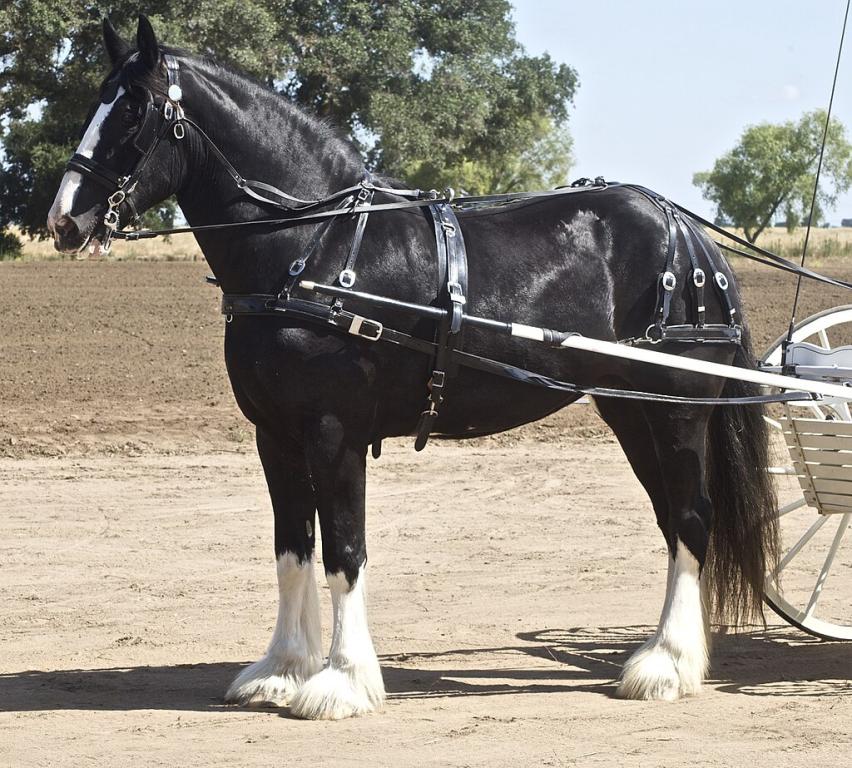
Continent: Europe
Country: United Kingdom
Weight: 900 – 1200 kg
Height: 173 – 193 cm
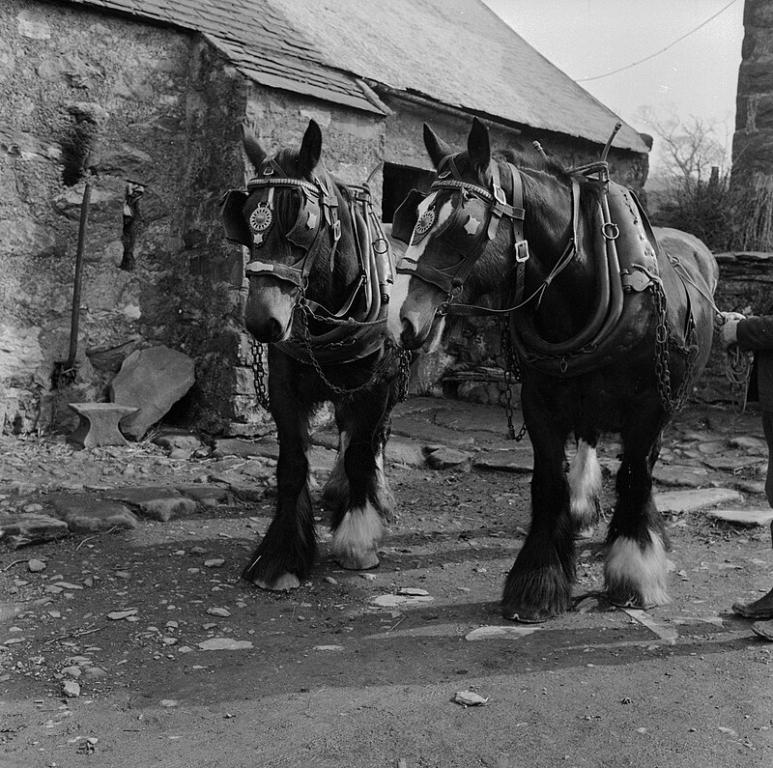
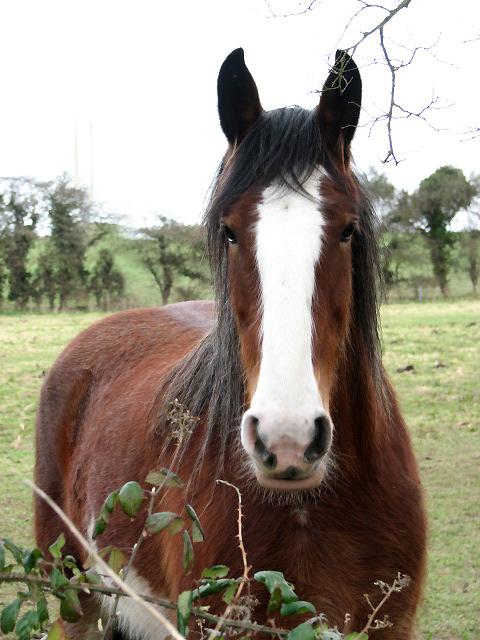
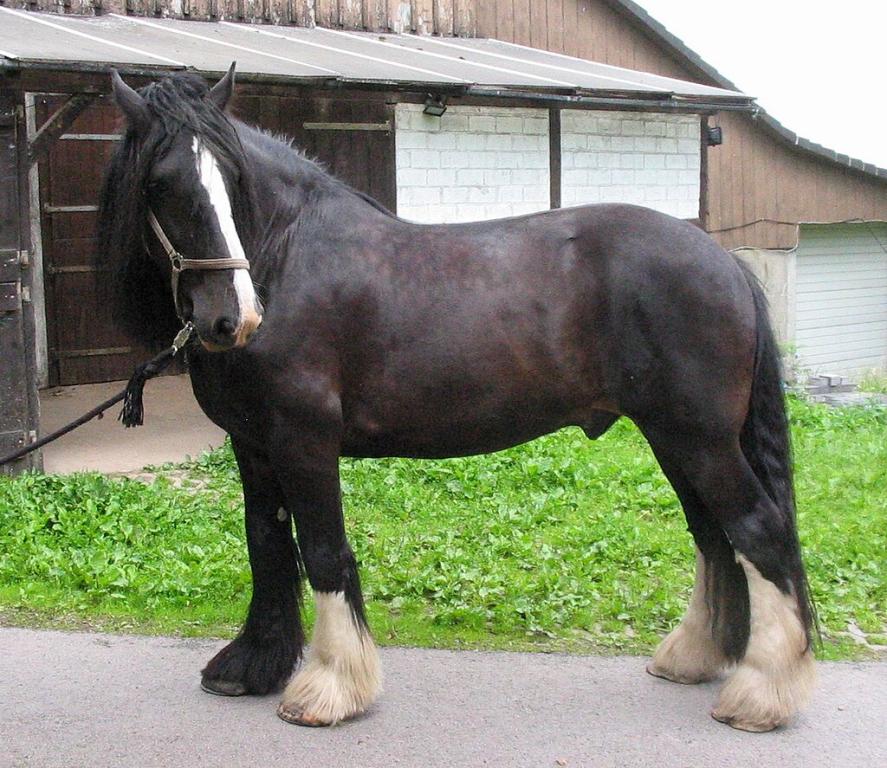
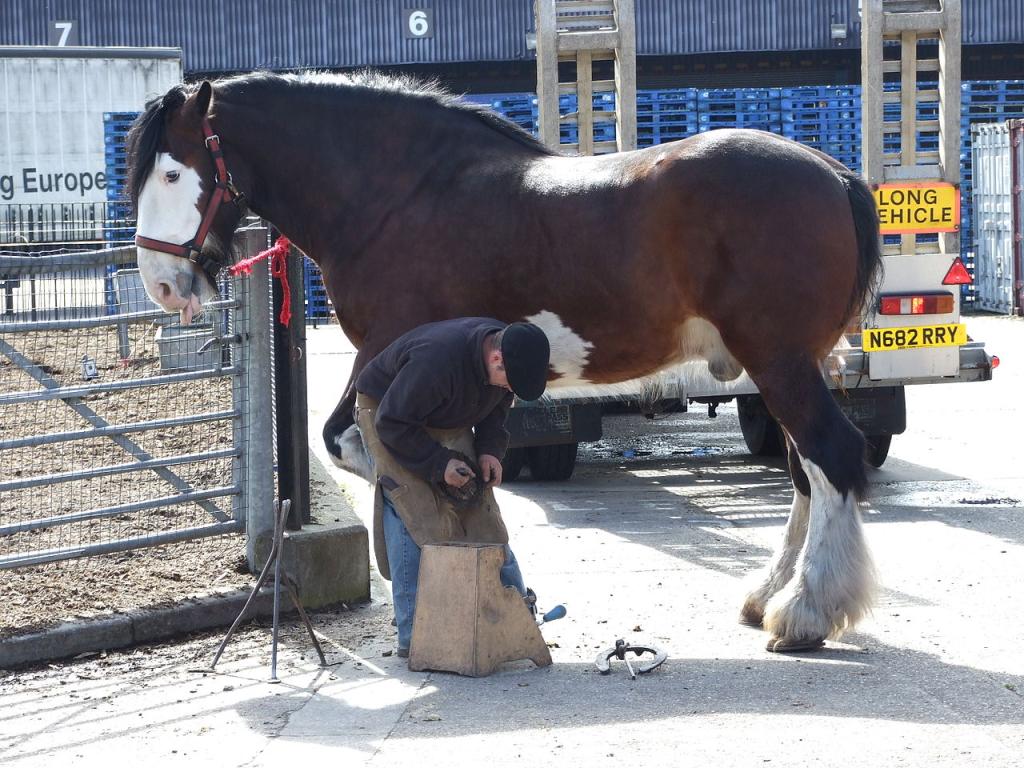
Geographic origin:
The Shire originates from the East Midlands of England, primarily from the counties of:
- Lincolnshire
- Leicestershire
- Cambridgeshire
These regions, rich in deep clay farmland, required powerful horses capable of pulling heavy loads and ploughing efficiently.
Cultural origin:
The Shire descends from the medieval “Great Horse”, used by armoured knights in battle during the late Middle Ages. From the 16th century onwards, with Henry VIII’s ban on importing foreign draft horses, local breeds were favoured and improved, notably through crosses with Flemish and Friesian horses.
The name “Shire” (meaning “county” in English) refers to its origin in the English countryside, where it became the quintessential farm horse from the 18th century onwards. The Shire rose to fame in the 19th century as the brewer’s horse (beer dray horse), delivering barrels in towns particularly London and pulling massive loads with exemplary calmness.
The Shire embodies a dual tradition: that of the robust and imposing medieval warhorse, and that of the calm, enduring rural workhorse, which over the centuries has become a symbol of Britain’s agricultural heritage.
The Shire is now bred in several countries, but its historic breeding heartland remains in the United Kingdom, particularly in the rural regions of eastern and central England.
United Kingdom (cradle of the breed):
- Lincolnshire
- Leicestershire
- Cambridgeshire
- Nottinghamshire
- Derbyshire
Many breeders are affiliated with the Shire Horse Society, with births monitored and recorded. The breed has a strong presence in heritage farms, rural demonstrations, and conservation centres.
The Shire benefits from an international breeding network, but its numbers remain limited. Its breeding relies mainly on dedicated enthusiasts, conservation organisations, and users in eco-friendly draft work or traditional carriage driving.
The Shire plays a major role in the genetic history of European and North American draft horses. Its exceptional size, calm strength, and docility have made it a reference breeding model, both for agricultural traction and for the creation of other breeds.
Heir to the medieval “Great Horse”:
The Shire descends directly from the large medieval English warhorses, sometimes crossed with Friesians and Flemish horses in the 16th century. It represents an ancient lineage at the foundation of many heavy British horse breeds.
Current value in genetic diversity:
Despite its impressive stature, the Shire shows good longevity, reliable fertility, and natural docility qualities sought after in crossbreeding programs or for eco-friendly working practices.
Its genetic reservoir is considered valuable for the preservation of heavy draft horses in a context of declining population numbers.
The Shire holds genetic, historical, and functional value, both as a guardian of an ancient type and as a source of powerful, well-balanced traits essential to the survival and diversity of the world’s equine heritage.
The Shire is one of the oldest and most impressive draft horse breeds in the world. Its history, spanning several centuries, is closely tied to that of rural, industrial, and military England.
Medieval origins – the “Great Horse”:
The Shire’s ancestors date back to the Middle Ages, when Great Horses were used by armoured knights in warfare. These massive horses had to be capable of carrying heavily armed riders and charging in formation.
From the 16th century onwards, King Henry VIII banned the import of foreign draft horses to protect local breeds, thus promoting the development of a powerful national draft horse.
Birth of the Shire breed (17th–18th centuries):
Over the centuries, the “Great Horse” type evolved into a draft horse adapted to agricultural and transport needs. Crosses with Friesian and Flemish horses enhanced its size and bone structure.
The type became established in the counties of Lincolnshire, Leicestershire, and Cambridgeshire, from which it takes its name “Shire” (meaning “county” in English).
Heyday in the 19th century – the horse of the industrial era:
The Shire became an indispensable draft horse in English agriculture, particularly for ploughing, transporting grain and hops.
It was also widely used in cities as a brewer’s dray horse, hauling heavy beer wagons through the streets of London and other major cities. The official stud-book was founded in 1878 by the Shire Horse Society, allowing for rigorous selection.
At this time, the Shire was exported to Canada, the United States, and Australia, contributing to the foundation or improvement of other breeds.
Decline in the 20th century:
After World War I, and with the mechanisation of agriculture and transport, numbers plummeted.
Thousands of Shires were sold or slaughtered, and the breed came close to extinction in the 1960s–70s.
Modern revival:
Thanks to the dedication of enthusiasts and associations (notably the Shire Horse Society), the breed was gradually saved. Today, the Shire has found a place in modern uses such as carriage driving, logging, heritage events, and rural tourism. It has become a living symbol of Britain’s agricultural heritage, admired for its imposing stature and calm temperament.
The Shire embodies the evolution from warhorse to workhorse, and now to heritage horse. It symbolises quiet strength, rural resilience, and the majesty of European draft horses.
The Shire is renowned for its calm, docile, and reliable temperament, making it one of the easiest draft horses to handle despite its impressive stature. Its behaviour is a major asset of the breed.
General temperament:
- Very docile – naturally gentle, making it safe even for beginners.
- Patient – responds calmly to external stimuli and keeps its composure in noisy or busy environments.
- Willing – enjoys working, especially when well treated and valued.
- Obedient – attentive to commands, reacting steadily without agitation.
Behaviour at work:
- Enduring and consistent, able to handle prolonged effort, making it ideal for draft work, logging, or carriage driving.
- Reliable – maintains a steady attitude even in repetitive or demanding tasks.
- Safe to handle, rarely aggressive or unpredictable, even in crowds or during parades.
Relationship with humans:
The Shire is an affectionate and cooperative horse, often forming strong bonds with its handler. Thanks to its calm nature and kindness, it is often used in public events, educational demonstrations, and tourism activities.
The Shire combines physical power with gentleness of character. It is a gentle giant, valued for its safety, loyalty, and adaptability, both at work and in contact with the public.
The Shire, an iconic draft horse of the United Kingdom, holds a strong cultural and historical heritage. However, its future prospects remain mixed due to declining numbers and the gradual disappearance of its traditional agricultural uses.
Strengths for the future:
- Heritage and institutional support – Founded in 1878, the Shire Horse Society remains highly active in promoting and preserving the breed. The Shire is regularly showcased at major events, such as the National Shire Horse Show, which boosts its visibility and stimulates public interest.
- Reintegration into modern uses – Practices such as eco-friendly forestry work, organic market gardening traction, and tourist carriage driving are giving the Shire concrete roles once again. Some breweries also maintain the tradition of the beer dray horse, particularly in London.
- Cultural value and tourist appeal – The Shire appears in historical reenactments, medieval festivals, rural events, and theme parks, embodying the living memory of Britain’s rural heritage.
- International breeding and controlled exports – Active breeding programs exist in the United States, Canada, Australia, and several European countries. This global distribution helps secure the breed’s survival beyond its historical homeland.
The Shire is generally a robust and hardy draft horse, but its large size and certain morphological characteristics make it prone to a few specific conditions, particularly those related to skin and circulation.
Health strengths:
- Good longevity for a draft horse (15 to 25 years)
- Natural resistance to the humid climatic conditions of the English countryside
- Strong bone and muscular build, well adapted to heavy work
It is rarely prone to respiratory diseases, thanks to its well-developed chest.
Recommended care :
- Regular monitoring of the feather and daily cleaning of the legs
- Strict weight and exercise management, even outside working periods
- Specialised veterinary follow-up for breeding stock and large horses
- A clean and dry environment to limit skin conditions
The Shire is an overall healthy horse, but its giant size and abundant feathering require careful maintenance and proactive prevention. Attentive management ensures its longevity and well-being.
A four-beat gait, regular and ample, with a marked neck swing. The Shire maintains great stability and an energetic stride despite its size.
A two-beat gait with synchronised diagonals. In the Shire, the trot is powerful and elevated, with strong hindquarter engagement and a proud neck carriage.
A three-beat gait with a moment of suspension. Although a draft horse, the Shire maintains a smooth and balanced canter, often seen in carriage driving or show demonstrations.
Born on 01/01/1846
Born in 1846 in Bedfordshire (England)
Height: 2.19 m at the withers (still an unbeaten world record)
Estimated weight: over 1,500 kg
Laid the foundations of the modern Shire and is regarded as a legendary giant in equine history.